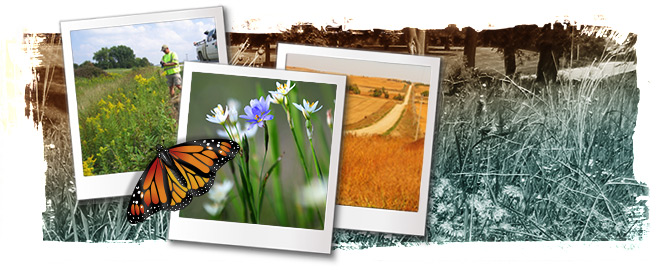INTEGRATED ROADSIDE VEGETATION MANAGEMENT
 The concept of integrated roadside vegetation management (IRVM) has a long history in the state of Iowa. With its beginnings in the mid-1970s, Iowa was one of the first states to establish IRVM programs at the city, county, and state levels. The goal of IRVM is to provide an alternative to conventional roadside management practices, which were common before IRVM was adopted. These conventional practices, including the extensive use of mowing and herbicides, were often too costly to implement on a regular basis, were frequently ineffective, and contributed to an increased potential for surface water contamination.
The concept of integrated roadside vegetation management (IRVM) has a long history in the state of Iowa. With its beginnings in the mid-1970s, Iowa was one of the first states to establish IRVM programs at the city, county, and state levels. The goal of IRVM is to provide an alternative to conventional roadside management practices, which were common before IRVM was adopted. These conventional practices, including the extensive use of mowing and herbicides, were often too costly to implement on a regular basis, were frequently ineffective, and contributed to an increased potential for surface water contamination.
Today, IRVM integrates the use of native and other select types of vegetation with appropriate management techniques to produce a cost-effective, environmentally sound management alternative for roadsides. To achieve Iowa's IRVM objectives, the state’s IRVM Plan is implemented along federal and state highways through the coordination of the Iowa Department of Transportation. Additionally, many counties and cities have adopted an IRVM plan for managing vegetation along their roadsides. Search the database of county and city IRVM contacts if you would like to know more about IRVM programs in your area.
To date, more than 50,000 acres of federal, state, county, and city roadsides in Iowa have been planted to native grasses, wildflowers, and other select types of vegetation. Many of these plantings have been funded by the LRTF, and all help to achieve the objectives of IRVM.